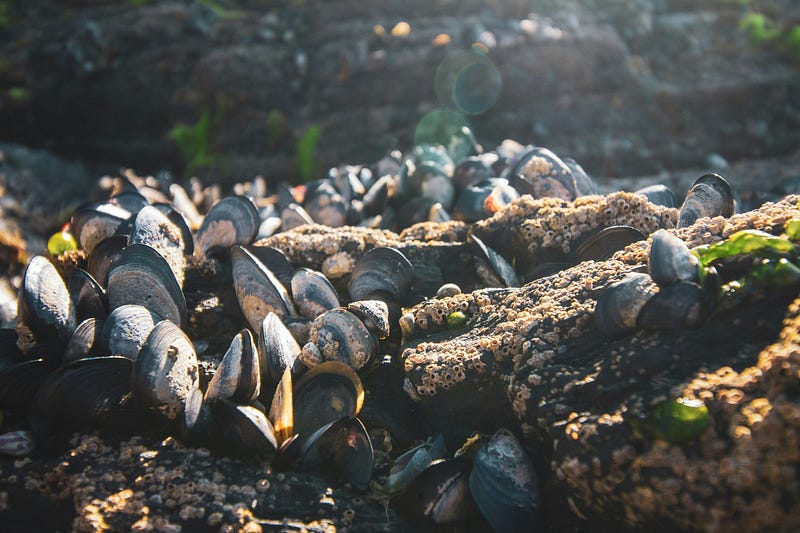The Incredible World of Natural Animal Glues
Written on
Chapter 1: The Evolution of Glue in Nature
For over 200,000 years, humans have been crafting different types of adhesives to assist in tool-making and other tasks. The earliest forms of glue, derived from birch bark, were transformed into tar through heating. However, animals have been utilizing natural adhesives for an even longer period. Creatures like frogs, mussels, and silkworms have developed remarkably effective substances that serve purposes such as growth, daily survival, and protection from predators.

Section 1.1: Mussels and Their Ingenious Adhesive
Mussels and clams thrive in dynamic, turbulent environments, where they face the constant threat of being swept away by waves. To anchor themselves securely, they produce a robust adhesive through a sophisticated multi-step process similar to two-part epoxy. The components remain unsticky until combined, allowing them to bond even in aquatic conditions.
In the mussel's muscular foot, tiny channels release interior bags filled with proteins and metal ions, notably iron and vanadium. When mixed in water, these elements solidify into a strong glue within just a few minutes. Although this complex material, composed of at least eight proteins, might not be mass-produced for underwater applications, it holds promise for surgical adhesives that must maintain strength in wet environments.
Section 1.2: Frogs and Their Sticky Defense Mechanism
In the animal kingdom, "sticky" is rarely associated with a tasty meal. However, some frogs, such as Madagascar's tree frogs, have evolved to produce sticky adhesives as a defensive strategy, making them less appealing to predators like snakes and birds. Research led by Dr. Kim Roelants from Vrije University Brussel revealed that these frogs create glue from a combination of flexible protein strands and sticky sugars, resulting in a gelatinous slime.
This glue is secreted only when the frog feels threatened. Its immediate stickiness provides a deterrent for predators; it only takes one or two attempts for a predator to realize that these frogs pose more trouble than they’re worth.
Section 1.3: Silkworms and Their Protective Cocoons
Silkworms, a type of moth cultivated by humans for thousands of years, produce silk threads for their cocoons. The silk itself is made from fibroin proteins, but the cocoons also contain a sticky protein called sericin, which binds the fibers together. After harvesting, sericin is mostly removed through boiling.
Sericin possesses useful qualities, including antimicrobial properties, making it valuable for wound suturing. Additionally, it is found in some cosmetic products, where it aids in preventing moisture loss from the skin. As silkworms form their cocoons, they secrete sericin, which envelops the fibroin fibers, ensuring they adhere properly. Although much of this byproduct is discarded today, it could become a sought-after commodity in the future.
Section 1.4: The Advantages of Biological Glues
Studying biological glues presents numerous benefits. While they may not rival the strength of synthetic adhesives, they often offer advantages such as improved water resistance, reduced chances of immune reactions when used on wounds, and inherent antimicrobial properties.
Most biological adhesives are protein-based and challenging to mass-produce, but we might harness them as byproducts from existing processes, such as silk production. Various creatures, including slugs and slime-producing velvet worms, also create unique forms of natural adhesives. In many aspects of survival, from hunting to defense, a bit of stickiness can be invaluable.
The diverse properties of these glues, which are activated only when secreted from the animal, hint at untapped potential. Future advancements could see "frog glue" or "mussel glue" becoming staples in medical kits.
Chapter 2: Practical Applications of Natural Glues
This video showcases a simple method to create homemade glue using flour, demonstrating how natural adhesives can be made easily and effectively.
In this video, viewers learn how to produce a natural glue, highlighting the versatility and utility of biological adhesives in everyday applications.